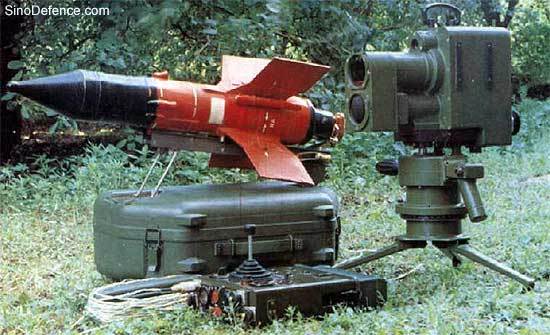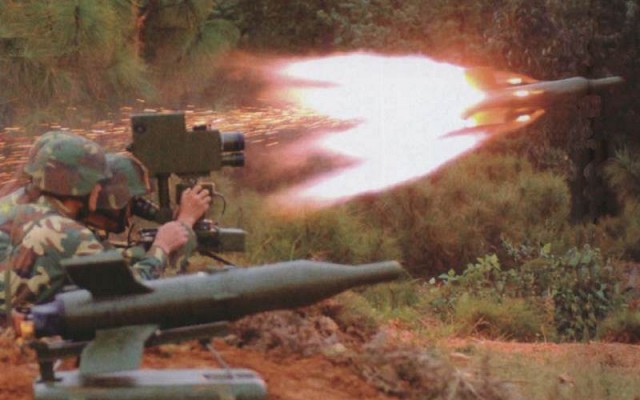HJ-73
Overview

HJ-73
Original Chinese HJ-73 with MCLOS guidance.
Source: www.sinodefence.com -
© copyright lies with original owner
AFT07D (modern PLA designation for HJ-73D)
Description
Introduction
The HJ-73 is an anti-tank missile of Chinese origin. While the first model was a direct copy of the Soviet 9M14M Malyutka anti-tank missile, subsequently new models were developed in China. Although considered obsolete, it remains in widespread use while it is cheap and simple to use compared to modern anti-tank guided weapons.
Design
The HJ-73 started out as a direct copy of the Soviet 9M14M and its associated 9S415 control box. Improved models incorporate some technology from the HJ-8 design program.
Firepower
Early model HJ-73 were a direct copy of the Soviet 9M14M. These suffer from the same drawbacks, such as 400mm penetration and MCLOS guidance. The HJ-73 was continuously improved, but is not as potent as the latest Serbian models. SACLOS guidance became available from the HJ-73B onward. All HJ-73 models have a maximum range of 3 km.
Platforms
The HJ-73 is used from either a manpack launcher or a vehicle installation. Early model manpack launchers were a direct copy of the Soviet control box. Later a domestic SACLOS control station was developed. Recently a lot of modern Chinese vehicles have been fitted with HJ-73C on either side of the turret.
Users
The HJ-73 saw widespread service in China and as exported to various nations with close ties to China. In the anti-tank role the HJ-73 was replaced by more modern Chinese anti-tank guided missiles. Recently various modern armored vehicles in Chinese service have been fitted HJ-73C on either side of the turret. These are not the dedicated tank destroyer vehicles, but infantry fighting vehicles that are likely to encounter non-MBT armored vehicles on the battlefield.
Variants

HJ-73B
Chinese HJ-73B with both MCLOS and SACLOS guidance systems alongside.
Source: www.sinodefence.com -
© copyright lies with original owner
Variants of the HJ-73 anti-tank missile
Details
Media
Launch platforms

ZBD05
The ZBD05 is a modern amphibious infantry fighting vehicle. A HJ-73 missile is fitted on a launch rail on either side of the turret and are controlled from within the vehicle.

ZBD03
The ZBD03 is a lightweight infantry combat vehicle for airborne forces. Its turret has a single roof mounted launch rail for a HJ-73 anti-tank missile.
Related articles

9K11 Malyutka
The HJ-73 started out as a direct copy of the Soviet 9M14M Malyutka-M missile with MCLOS guidance.



